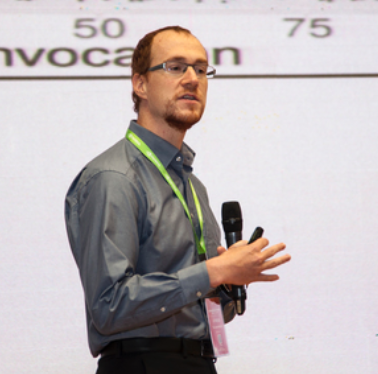Professor Torsten Hoefler’s Public Lecture on November 8th, 2016 at 17:15 in HG F5
On Tuesday, November 8, 2016 at 17:15 Professor Torsten Hoefler will give a public lecture on “Scientific
Performance Engineering in HPC” at ETH Zurich, HG F 5.
Herewith Torsten’s short CV and the abstract of his lecture:
Torsten is an Assistant Professor of Computer Science at ETH Zürich, Switzerland. Before joining
ETH, he led the performance modeling and simulation efforts of parallel petascale applications for
the NSF-funded Blue Waters project at NCSA/UIUC. He is also a key member of the Message
Passing Interface (MPI) Forum where he chairs the “Collective Operations and Topologies” working
group. Torsten won best paper awards at the ACM/IEEE Supercomputing Conference SC10, SC13,
SC14, EuroMPI’13, HPDC’15, HPDC’16, IPDPS’15, and other conferences. He published numerous
peer-reviewed scientific conference and journal articles and authored chapters of the MPI-2.2 and
MPI-3.0 standards. He received the Latsis prize of ETH Zurich as well as an ERC starting grant in 2015.
His research interests revolve around the central topic of “Performance-centric System Design” and
include scalable networks, parallel programming techniques, and performance modeling. Additional
information about Torsten can be found on his homepage at htor.inf.ethz.ch.
=====================================================================================
PUBLIC LECTURE – November 8, 2016 at 17:15 at ETH Zentrum, HG F5
Title: Scientific Performance Engineering in HPC
Abstract: We advocate the usage of mathematical models and abstractions in practical high-performance
computing. For this, we show a series of examples and use-cases where the abstractions introduced by
performance models can lead to clearer pictures of the core problems and often provide non-obvious insights.
We start with models of parallel algorithms leading to close-to-optimal practical implementations. We continue
our tour with distributed-memory programming models that provide various abstractions to application developers.
A short digression on how to measure parallel systems shows common pitfalls of practical performance modeling.
Application performance models based on such accurate measurements support insight into the resource consumption
and scalability of parallel programs on particular architectures. We close with a demonstration of how mathematical
models can be used to derive practical network topologies and routing algorithms. In each of these areas, we demonstrate
newest developments but also point to open problems. All these examples testify to the value of modeling in practical
high-performance computing. We assume that a broader use of these techniques and the development of a solid theory
for parallel performance will lead to deep insights at many fronts.

